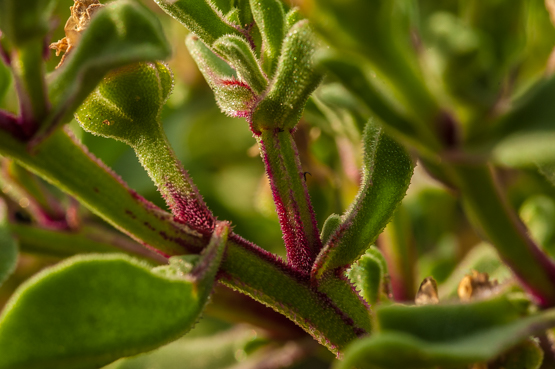Like so many other members of the genus, this species is a pioneer and therefore usually found in disturbed places.
The plants occur in the southern and eastern cape region, in both summer and winter rainfall areas.
They are creeping or upwards growing annuals or biennials, depending on the water supply. The stems are round or -as the pictures show- somewhat angular; they have flat and more or less spatula-shaped leaves which are very variable in size, to 5 cm long and 1.5 cm wide.
The flowers are 0.5-2 cm in diameter, white, sometimes with a pinkish tint; they appear from September to January.




